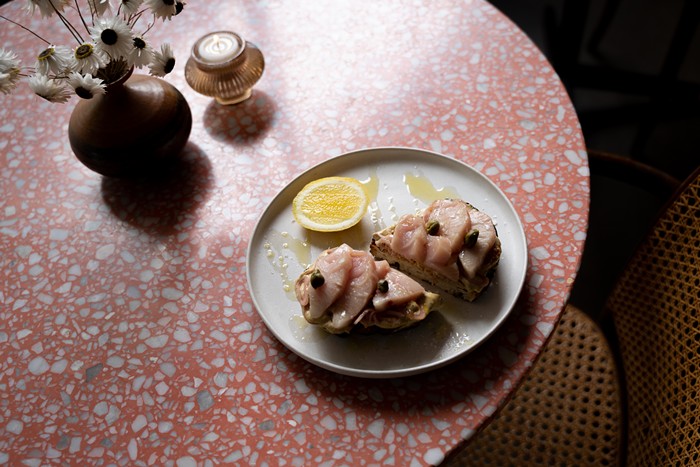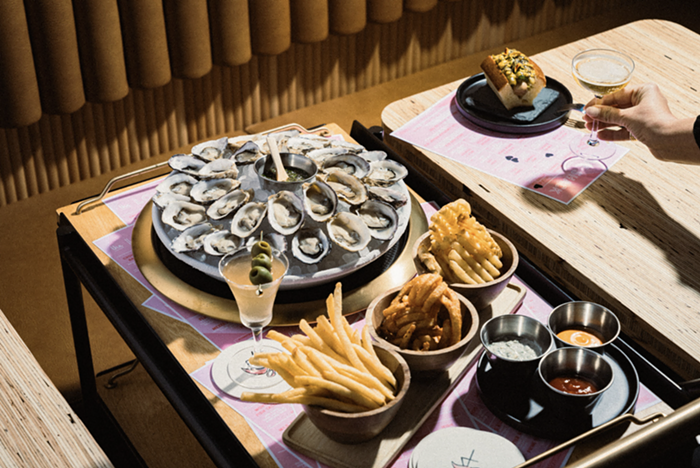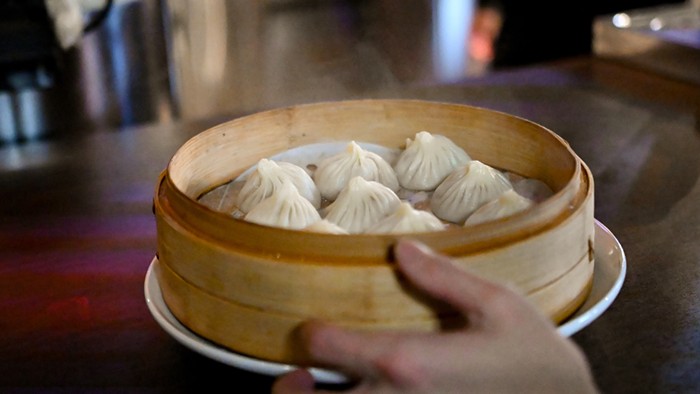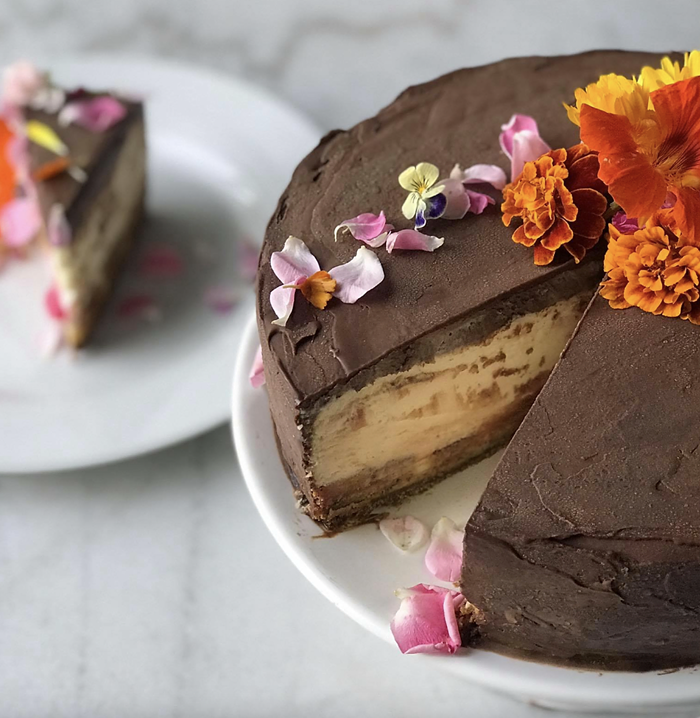
In February, Ecliptic's owner and brewmaster John Harris announced a forthcoming Moon Room special release series devoted to lagers. It took its name from the Ecliptic location that opened in fall 2021, at the former Base Camp Brewing spot in SE Portland. But in terms of taste it traveled.
The series launched with a global classic Vienna-style lager, March called for a German-style Märzen ("March" in German), but April’s release(s) went off the rails! Harris unveiled two rice-forward Japanese-style lagers, named Rice Lager & Rice Lager Jasmine respectively. The only difference between the two lay in one's hint of jasmine. Both turned out like craft versions of Asahi Super Dry—the best-selling beer in Japan—or Sapporo, the OG and best-selling Japanese beer in America.
And both defied the Bavarian Purity Law that mandates barley malt as the sole source of fermentable sugars.
“At the beginning of this micro-craft revolution, we were doing everything we could to separate (ourselves) from big, macro beer.” Harris told the Mercury. “Now we just want to be innovative.”
It might be hard to pitch rice lagers as innovative when the first fermented beverages made from rice were purportedly brewed in China 9,000 years ago. But when craft brewing emerged as a reaction to the industrial breweries that used rice and corn to cheapen the grain bill and offer increasingly lighter (and less flavorful) beers, the initial guard spoke of those grains pejoratively.
However, from a personal perspective, Japanese-style lagers have been my favorite style for the past few years, and if I had to guess why—other than they’re simple and elegant and perpetually refreshing—it’s because they’re the antithesis of the modern, flashy side of craft brewing.
They’re not overindulgently hazy. There’s no repulsive layer of chunky fruit puree left on the glass. There’s no nostalgic candy bar flavoring. And there isn’t a plethora of hops. In fact, hops play more of a stabilizing role than a starring one, and that clean palette leaves room for the yeast to hum.
Rice lagers are sublime in their simplicity. They’re Adam McKay’s Don’t Look Up on the heels of Holmes and Watson. OK, that’s not fair. They’re Taylor Swift’s mature Evermore after her jejune Red.
When craft brewers started churning out light and Mexican lagers, there was a sense of those beers being guilty pleasures. With Japanese-style lagers, the chrysalis has been shed.
“These are our first rice lagers, [specifically flaked rice]," Harris said. Before, he’d only employed the grain in the background of brewing recipes.
Harris is not alone in his interest. Other area breweries with rice lagers include Stickmen (Gaijin Dream, which debuted in 2016 using flaked brown rice as well as Japanese Sorachi Ace hops), Ruse (Shifting Dreams), Von Ebert (Perceptual Shift), Pono (Cuzzi Companion), Level (Sweep the Leg), and then Breakside has almost too many to list.
I crush Sweep the Leg more than most others, probably because it’s sold as a three dollar stovepipe can (19.2 ounces). “The idea was Asahi-esque with about 15 percent puffed Jasmine rice, Southern Hemisphere hops, kind of mango-coconut sticky rice,” Brewer and owner Jason Barbee said of his rice lager. You don’t have to have binged Cobra Kai to appreciate Sweep the Leg’s Karate Kid reference splashed on the cans. It reads: “no mercy,” because in lieu of mercy we get delicate, floral flavor.
In Hood River, over half the breweries boast a rice-style lager. Double Mountain’s Jiro Lager, Ferment’s new Hana Pils, and pFriem’s Japanese Lager (which earned a gold medal at the 2020 Great American Beer Festival in the International Pilsner category) are all worth the drive out to the Gorge.
Ferment’s new Hana Pils feels international, since pilsners are associated with the Czech Republic and Germany. However instead of turning to Japanese hops, Hana is ever-so-lightly bittered with French Strissel Spalt, Slovenian Celeia, and German Hüll Melon hops. One of the magnificent aspects of this beer—and this style—is that it goes with a range of cuisine. The beer plays a supporting role at meals, never overpowering. Like a bouquet of fresh flowers, the nose and palate still complement smashingly.
“As a craft brewer, I think it can be fun to embrace ingredients that were originally used to cut costs, and find interesting flavor combinations with them at the center." Ferment’s brewmaster Dan Peterson told the Mercury. "Though Japan has had a thriving craft beer scene since the '90s, the big lager breweries operating since the mid-1800s have used rice liberally to keep down costs associated with malted barley. For Hana Pils, we highlight and showcase the 150-year-old Japanese tradition of brewing with rice by using toasted rice at 27 percent of the grain bill.”
When it comes to Japanese-inspired lagers, the form and type of rice to use—and how much—seems to be the real frontier left to explore.
White Tea Lager 🫠 pic.twitter.com/awx8DnUmgD
— Breakside Brewery (@breaksidebrews) May 19, 2022
As we mentioned before, Breakside Brewing has created multiple beers with a rice profile—be it flaked, puffed, syruped, or toasted—including the current White Tea Lager and past ones like a lager made from rice and salted plums, a collaboration with Logsdon Farmhouse Ales, and even a beer called Mango Sticky Rice. “We also make our Mexican Lager with rice,” brewmaster Ben Edmunds said. “Crazy, I know!”
As an aside, Asahi also uses corn in their rice lager.
So what’s the optimal way to use rice? “That depends entirely on the beer,” opines Edmunds. “[In an] adjunct lager… the rice additions are mainly to provide a clean source of simple sugars. But there are plenty of ways to dry out a beer without rice, so in my mind the use of rice is actually more about developing a distinct set of yeast metabolites that barly-only lagers do not provide.”
It's true that rice lagers provide a wonderful and delicate platform for otherwise subtle notes of tea or jasmine, but the past few years have quietly made evident that the cleanliness and serenity found in Japanese-style rice lagers may represent a new maturation of craft beer.


















